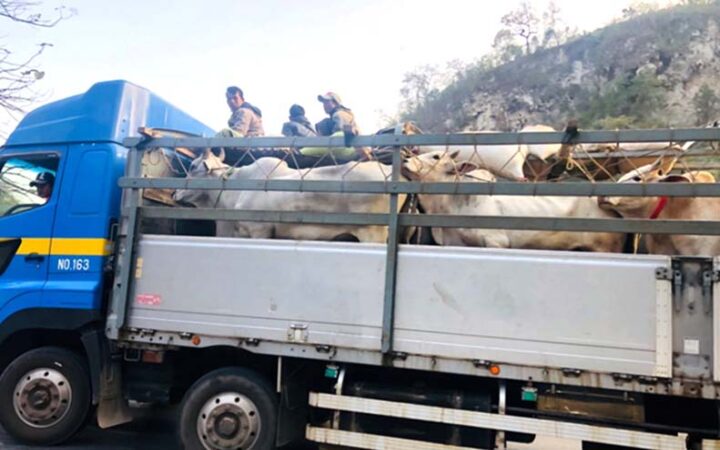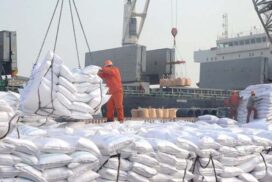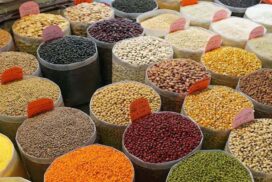Myanmar exported over 1,100 tonnes of wet salted hides of cows and buffalo to India in the past six and a half months of the current financial year 2022-2023, according to the Ministry of Commerce.
Between 1 April and 15 October of the current FY, 1,175 tonnes of wet salted cow hides worth US$0.479 million were shipped to India.
In the past six-month mini-budget (October 2021- March 2022), the export value of wet salted hides was estimated at $0.357 million from 850 tonnes.
Myanmar’s export of wet salted hides amounted to $0.080 million (160.776 tonnes) in the 2020-2021 FY, $0.246 million (492 tonnes) in the 2019-2020 FY and $0.464 million (858 tonnes) in the 2018-2019 FY respectively.
Despite the exports of wet salted cow hides, live cattle exports to India have not been seen so far, the Ministry of Commerce stated.
On 21 October 2022, Champhai District Court decreed to restrict the live cattle import from Myanmar to the northeastern Mizoram State of India. According to District Judge James Lalrinchana, some cattle allegedly infected with the Foot and Mouth Disease were found along the India-Myanmar border areas. This is the reason for the objection to live cattle import. The sample of those sick cows and buffalos will be sent to Aizawal and Guwahati cities for lab tests.
That is why live cattle transport is strictly prohibited in the State.
Mizoram authorities frequently posed restrictions on the animals imported by Myanmar. In 2019 and 2010, following the contagious African Swine Fever, swine import was banned. In 2017, India restricted imports of cattle and swine due to the Porcine Reproductive and Respiratory Syndrome (PRRS) and swine flu.
In addition to the import ban on Myanmar’s live cattle in India, Myanmar’s cattle exports to the main buyer China through legitimate trade have stopped since late 2020.
Myanmar’s live cattle export is heavily reliant on the China market due to a good price although Myanmar has other external markets such as Laos, Thailand, Malaysia and Bangladesh.
The authorities concerned need to govern the market and coordinate the needs to generate revenue and increase the income of the growers and traders.
Although the legitimate trade of live cattle has been suspended, the black market is booming along the border areas of India and China.
Live cattle export was allowed in late 2017, with a view to eradicating illegal exports, creating more opportunities for breeders and promoting their interests, the Ministry of Commerce stated. — NN/GNLM
More than 1,100 tonnes of wet salted hides conveyed to India in over 6 months
- November 04, 2022
- 730














